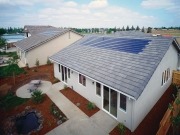
The Energy Efficiency Watch Project has released a series of 27 country reports profiling every state in the EU with regard to implementation of energy efficiency policies since 2007. The reports are based on the screening of National Energy Efficiency Action Plans (NEEAPs) as well as an expert survey, involving around 750 experts and are a valuable source of information for every policy maker, particularly with regard to the new Energy Efficiency Directive which is due in June 2014.
“As the new directive obliges the Member States to set indicative national energy efficiency targets for 2020 and to meet several binding requirements, it is crucial to review current policy packages and assess the progress made in their implementation” said Jan Geiss, EUFORES Secretary General and coordinator of the Energy Efficiency Watch Project.
Wuppertal Institute and Ecofys Germany have screened NEEAPs in order to highlight strengths and weaknesses of national energy efficiency policies and to identify policy gaps and provide recommendations. The second NEEAPs of 2011 differ in structure, content and level of detail to those of 2007 but they are also a huge improvement.
"We focused on effective governance frameworks, comprehensive sectoral policy packages and good practices” added Ralf Schuele from Wuppertal Institute. “Thanks to the extensive EU-wide expert survey on the policy implementation, we could supplement the country reports with a reality check - the survey results from every Member State.”
According to Daniel Becker from Ecofys, among the concerns raised by the screening is that the transport sector is one of the most neglected in most national strategies. However, the process of drafting NEEAPs has led member states to develop comprehensive planning exercises on energy efficiency policies and this is probably one of the biggest achievements of the NEEAP process and the Energy Services Directive. Nevertheless, it remains a concern that the majority of member states have not yet adopted long term energy efficiency strategies.
Further information:

